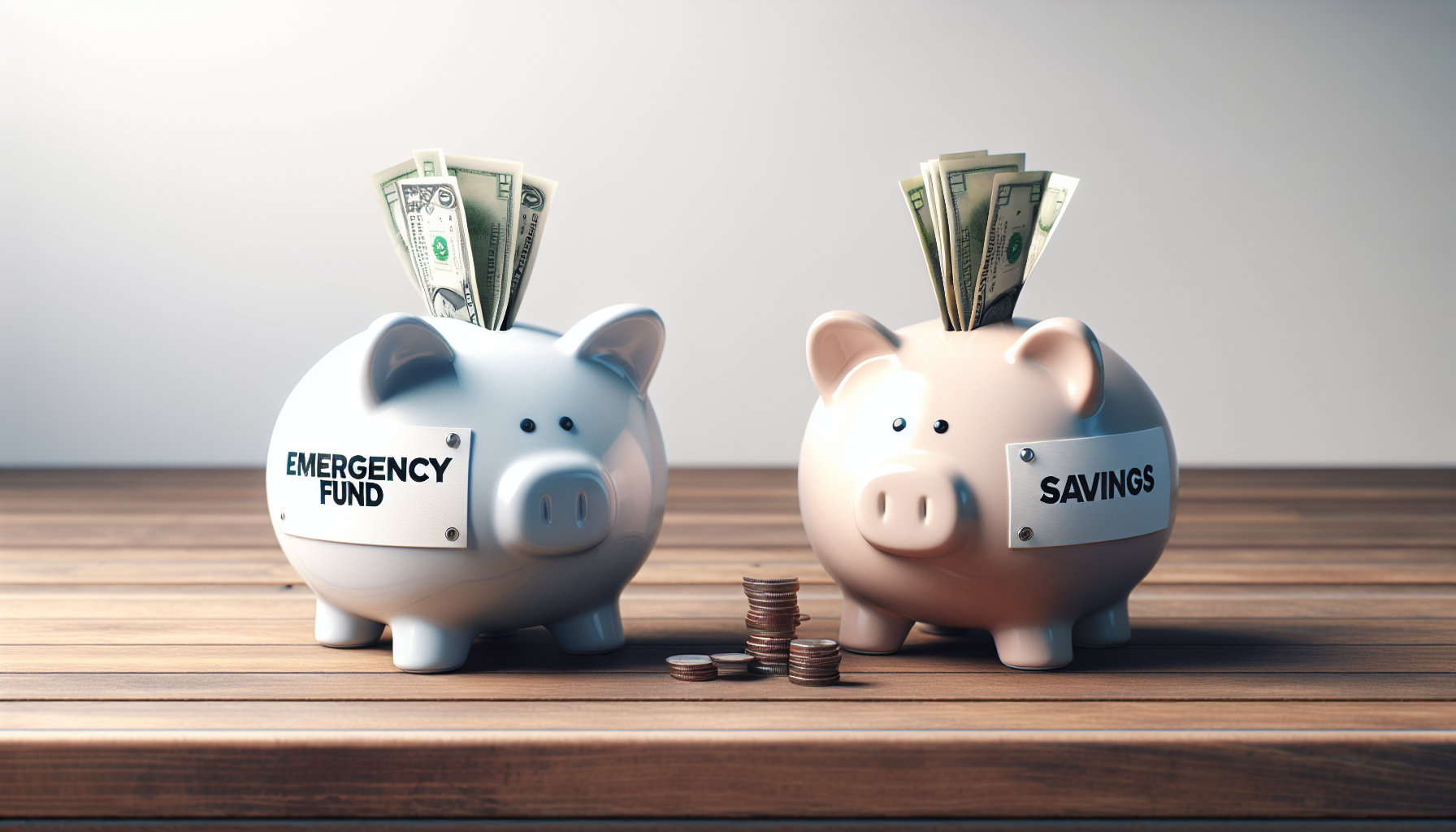When it comes to personal finance, two terms often used interchangeably are “emergency fund” and “savings”. However, understanding the critical differences between these two financial safety nets is essential for effective money management. This article will explore these differences, their significance in financial planning, and provide guidance on how to balance both.
Defining the Concepts
An emergency fund is specifically designed to cover unexpected expenses, such as medical emergencies, car repairs, or sudden job loss. Financial experts recommend building an emergency fund that can cover three to six months of living expenses. This fund serves as a financial buffer during unforeseen circumstances, allowing individuals to avoid debt.
In contrast, savings typically refer to funds set aside for future goals or larger purchases. This could include saving for a vacation, a new home, or retirement. Unlike an emergency fund, savings can be planned and are often associated with specific financial objectives.
Market Impact
Understanding the distinction between an emergency fund and savings has significant implications for personal finance, especially in today’s uncertain economic climate. As inflation rates rise and economic projections become more volatile, the importance of having a dedicated emergency fund has never been more apparent. In 2023, a survey conducted by Bankrate indicated that nearly 60% of Americans would struggle to cover an unexpected $1000 bill. This statistic underscores the essential nature of an emergency fund in helping individuals navigate financial shocks.
The Federal Reserve’s insights show how households with a sufficient emergency fund tend to experience less financial stress. Economically, this fosters a more stable consumer base, which is beneficial for long-term growth in local and national economies. Increased consumer confidence can lead to higher spending and, consequently, economic expansion.
Expert Opinion
Experts recommend a proactive approach to establishing both an emergency fund and savings. According to personal finance coach Rachel Cruze, “Having a safety net allows you to make choices without the constant fear of financial ruin.” Cruze emphasizes that while building an emergency fund should be a priority, individuals also need to engage in systematic savings for their future goals.
Financial planner John M. Sweeney advocates for tackling high-interest debt before aggressively saving. He states, “Your emergency fund should be in place while tackling debt, but balance is key. Saving for goals shouldn’t take a backseat to emergencies.” This balanced approach can help individuals create a holistic financial strategy that includes both immediate security and future ambitions.
Background
The roots of the personal finance movement emphasize the importance of emergency savings. Historically, the concept gained traction during economic downturns, notably the 2008 financial crisis. Many individuals who relied solely on credit faced significant challenges when their income was diminished. Today’s emphasis on emergency funds is a lesson learned from past financial hardships, highlighting the necessity of being financially prepared for unexpected events.
The ongoing economic environment, characterized by fluctuating job markets and unpredictable expenses, remains a catalyst for this discussion. As cost of living increases and wages stagnate, individuals are encouraged to reassess their financial priorities, putting both emergency funds and savings into perspective.
What’s Next
Moving forward, individuals should take a two-pronged approach to their financial health. First, prioritize establishing an emergency fund, ideally utilizing a high-yield savings account for better returns. Once a solid emergency fund is in place, individuals can shift focus to goal-based savings, identifying short-term and long-term financial objectives.
Financial literacy continues to grow, with various resources now available to assist individuals in this journey. Online calculators, budgeting apps, and personal finance courses can empower individuals to wisely manage their finances, ensuring they are prepared for both immediate demands and future aspirations.
In conclusion, while emergency funds and savings serve distinct purposes in the realm of personal finance, both are vital components of a sound financial strategy. Understanding their differences and managing each effectively is critical to achieving financial security and independence.







